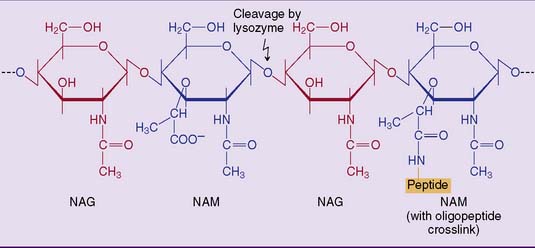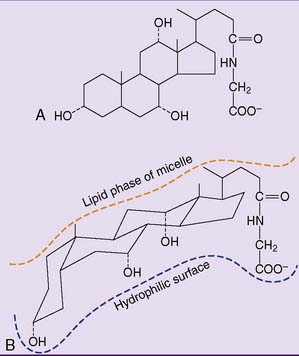Chapter 19 Digestive Enzymes
Approximately 30 g of digestive enzymes is secreted per day. Because each enzyme has a fairly narrow substrate specificity and hydrolyzes only certain bonds, several enzymes have to cooperate in the digestion of complex nutrients (Table 19.1).
Saliva Contains α-Amylase and Lysozyme
α-Amylase does not act on disaccharides and trisaccharides, and it does not cleave α-1,6 bonds. Therefore it produces maltose, maltotriose, and α-limit dextrins rather than free glucose (Fig. 19-1). Maltose is a disaccharide, and maltotriose is a trisaccharide of glucose residues in α-1,4-glycosidic linkage. α-Limit dextrins are oligosaccharides containing an α-1,6-glycosidic bond.
The other salivary endoglycosidase, lysozyme, hydrolyzes β-1,4-glycosidic bonds in the bacterial cell wall polysaccharide peptidoglycan (Fig. 19.2). Lysozyme kills some types of bacteria. However, other bacteria are resistant because their peptidoglycan is protected from the enzyme by other cell wall components or, in the case of gram-negative bacteria, by an overlying outer membrane. The members of the normal bacterial flora in the mouth (including those that cause bad breath) are resistant to lysozyme. However, many bacteria from other ecosystems are killed by lysozyme, and animals make use of this effect by licking their wounds. They use their saliva as an antiseptic.
Protein and Fat Digestion Start in the Stomach
The Pancreas Is a Factory for Digestive Enzymes
For protein digestion, the pancreas supplies the endopeptidases (and exopeptidases) trypsin, chymotrypsin, and elastase. All three are serine proteases (see Chapter 4), but with different cleavage specificities (see Table 19.2). Their action is complemented by exopeptidases. Carboxypeptidase A cleaves nonpolar amino acids from the carboxyl end of peptides, and carboxypeptidase B cleaves basic amino acids. Other pancreatic enzymes include pancreatic lipase, various phospholipases, and nucleases.
Fat Digestion Requires Bile Salts
Unlike the triglycerides, the products of fat digestion are slightly soluble in water. Their efficient absorption requires mixed micelles, which are formed with the help of bile salts (deprotonated bile acids) (Fig. 19.3). Between 20 and 50 g of bile salts reaches the intestine every day.









